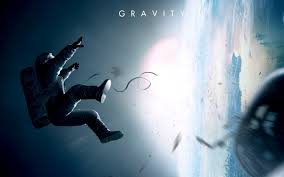Is the science of Gravity accurate? Could a scenario like that really happen?

Alfonso Cuarón’s Gravity, starring Sandra Bullock and George Clooney, is an anxiety-inducing wonder, but is the science involved in this latest space flick accurate?
Physicist Kevin Grazier was the advisor for the film (he’s also worked on Syfy’s Defiance and Battlestar Galactica and TNT’s Falling Skies,) and he admits that sometimes working with writers is hard because they have their own ideas about what they want to do that aren’t necessarily scientifically accurate. When working with advisors like Grazier, a compromise is often made where the writers try to stay as true to the science as possibly while still telling the story they want to tell.
You may want to quit reading now if you don’t want any spoilers.
Does fire really form balls like that in space?
Roberta Bondar, an astronaut who spoke with National Geographic, says that fire balls like this do form in space. A lot of research has been done with fire in controlled environments to prevent fires from happening in space because it would be a disastrous scenario.
Could Stone just get out of the water and start walking like that?
According to Bondar, possibly, but not likely. Recovering from space flight is a huge burden on the body, and it’s usually not so easy.
“I thought [Bullock] succeeded in capturing how physiologically difficult it would be to climb out and walk away,” says Bondar. “And she did it without all the scientific things we do to help astronauts prepare to return from space.”
The main issue is what happens to the fluid in our body in space. “Down here on the ground,” Bondar says, “we need about five liters [of water] running around in our intravascular volume. In space flight, we pee out about two of those liters in the first 24 hours because the fluids float up to the heart. This fluid volume is replaced with water and salt tablets during re-entry to keep the blood volume up,” she says.
Stone didn’t have a change to drink water upon her return, so it’s bit of a Hollywood stretch that she was able to start walking like that.
Could a debris chain-reaction like the one that caused all the destruction happen in real life? Should we be worried?
First of all, there is currently A LOT of space debris in low level orbit around earth. NASA is currently tracking about 500,000 pieces larger than 1 centimeter (roughly a half-inch) across traveling at a speed of 18,000 mph. At that rate, the astronauts wouldn’t have been able to even see the debris coming at them because it would be moving so fast.
But what caused the debris in the movie was a defunct Russian satellite being shot down by a Russian missile. According to astronaut Marsha Ivans “The communications satellites that create the debris field that wreaks all the havoc are actually 21,700 miles [35,000 km] higher than the shuttle’s orbit.” So, while there is a ton of debris in space, the scenario depicted in the film could not have happened.
Was is plausible that Sandra Bullock’s character could get from one space station to the next?
No so much. The Hubble telescope (where everything started,) the U.S. Space Station, and the Chinese Space Station are all on different orbits. It isn’t as simple as just jetting from one to the other, and would require some accurate physics calculations in Stone’s head.
A disclaimer: There IS a lot of science involved with this movie, and I don’t pretend to understand any of it. I’m just reporting what various scientists and astronauts have said about the film.






